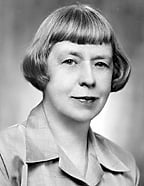A Gull Goes Up
Gulls when they fly move in a liquid arc,
Still head, and wings that bend above the breast,
Covering its glitter with a cloak of dark,
Gulls fly. So as at last toward balm and rest,
Remembering wings, the desperate leave their earth,
Bear from their earth what there was ruinous-crossed,
Peace from distress, and love from nothing-worth,
Fast at the heart, its jewels of dear cost.
Gulls go up hushed to that entrancing flight,
With never a feather of all the body stirred.
So in an air less rare than longing might
The dream of flying lift a marble bird.
Desire it is that flies; then wings are freight
That only bear the feathered heart no weight.
This poem is in the public domain. Published in Poem-a-Day on January 7, 2023, by the Academy of American Poets.
“A Gull Goes Up” was published in Léonie Adams’s collection Those Not Elect (Robert M. McBride and Company, 1925). In “The American Sonnet Community in the Early 1920s: The Alternative Evolution,” published in the CEA Critic vol. 74, no. 1 (Fall 2011), Paul Munn, former professor of English at Saginaw Valley State University, writes that Adams’s sonnet “is affiliated with those of [Robert] Frost and [E. E.] Cummings in representing a speaker’s response to an element of nature and more specifically resembles Romantic poems in which the speaker responds to the sound or flight of birds—[John] Keats’s nightingale, [Percy Bysshe] Shelley’s skylark, [W. B.] Yeats’s swans at Coole park in 1919 and his falcon turning in a gyre in 1921. It also recalls any number of Christian poems in its seeing an object of nature, a bird’s flight in particular, as emblems of the human spiritual condition from George Herbert’s 1633 ‘Easter Wings’ to [Gerard Manley] Hopkins’s ‘The Windhover. [. . .] The image of a ‘marble bird’ that might be lifted by ‘the dream of flying’ ‘in an air less rare than longing’ strains logic in the manner of the paradoxical language of Herbert and [John] Donne. The poem is metaphysical both in the broad sense that it contemplates mystical connections between the spiritual world and its earthly emblems and in the sense that it includes a difficult and strikingly unexpected, even incongruous poetic imagery.”

